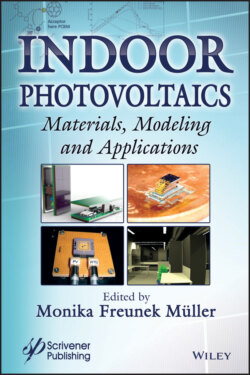Читать книгу Indoor Photovoltaics - Группа авторов - Страница 23
2.2.1.3 Flow of Gas and Fluids
ОглавлениеThe theoretical limit of usable power Pmax of a gas flow from an electric turbine is defined by the conversion coefficient cP following the Betz limit [30]
(2.3)
where A denotes the flow area, ρ the density of theflow medium and v its speed. cp is defined by the ratio of the flow velocity v1 before the rotor of the turbine to the flow velocity v2 after the rotor
(2.4)
with cp(x) defined as
(2.5)
and the rotor speed v as
(2.6)
The function has a maximum with x = 1/3 with power coefficient von 16/27. This equals 59.3% of the incoming kinetic power of the theoretical limit of the electrically usable power. The Betz limit covers flow losses due to the design of the rotor blades. Additional mechanical losses are caused by fraction, the inertia of the bearing, and the converter behind the rotor, typically electromagnetic. So far, large wind turbines demonstrated a conversion efficiency of about 40%. New types of design might exceed those limits. However, microturbines are expected to reach a range of 10% due to nonlinear effects and the small ratio of converter to loss surface [13, 31].
The flow speed in HVAC plants can reach up to 6 m/s. For an air density ρ = 1.2 kgcm-3, an efficiency of 10% and an area of 1 cm², an electric power of 1.3 mW could be achieved. The current European low-pressure systems reach up to 3 m/s, with a resulting power output of approximately 0.2 mW.
Although their maximum power limit is significantly below the limits of large gas flow turbines, indoor air flow of all sources can be a very valuable power source with achievable power in the milliwatt scale. This is sufficient to power most IoT applications.
